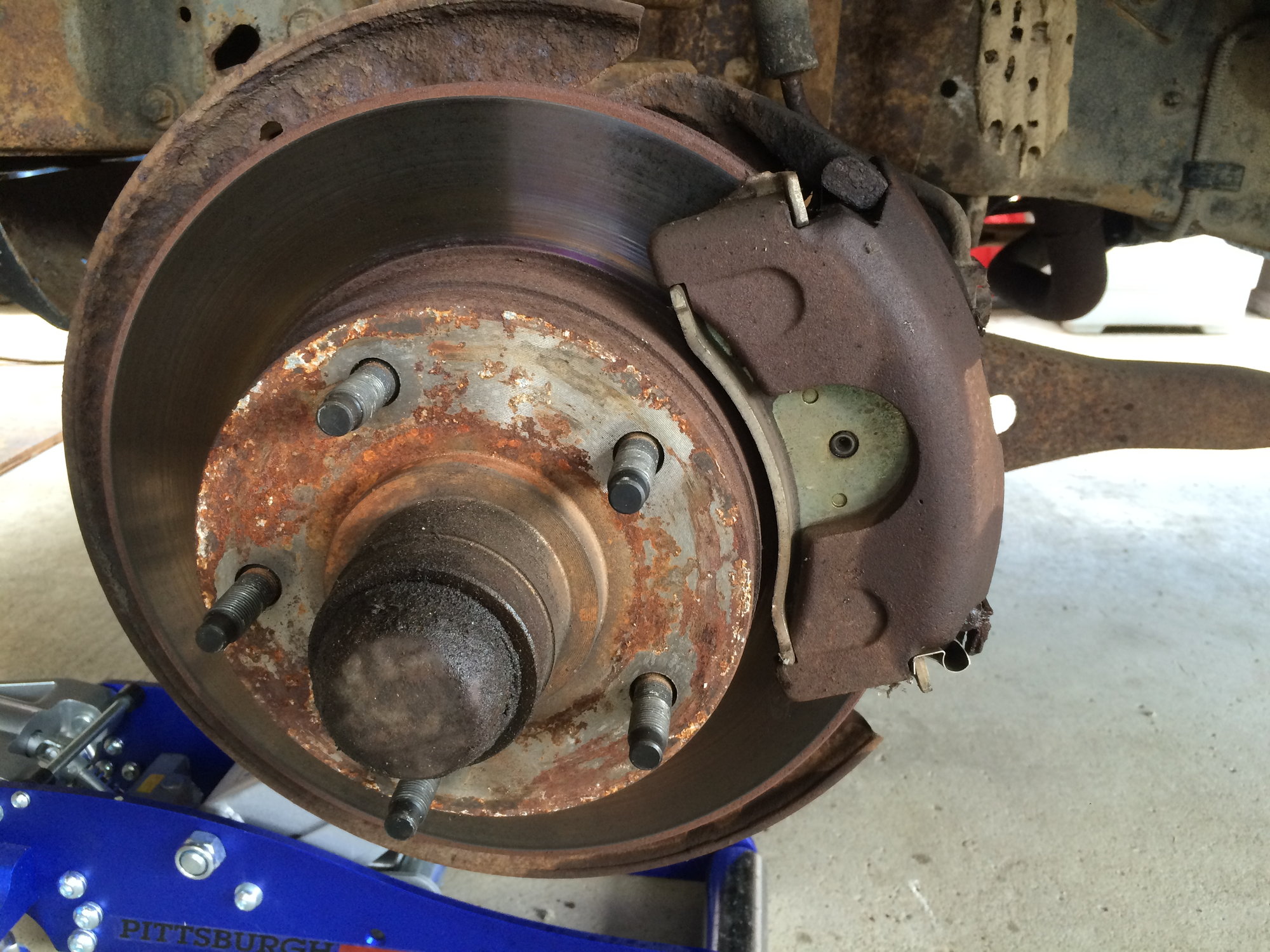
Just completed restoring both doors on my 66 F100.The gents at published a 2 page how-to in their recent 57-66 catalog (2008 version with red Slick on the cover). Though i found this helpful, and hope you will too, there are a few parts of the process i'd like to point out and amend.Page 1 - property of Dennis Carpenter:Suggested edit to Step 7: make sure your vent window is in the closed position after removing the footer screws in Step 6. There is a cam shaped 'stop' on the bottom pivot point of the vent window.
Install the inboard pad anti-rattle spring on the rear flange of the pad. Make sure the looped section of the spring is away from the rotor. Install the inboard pad with spring attached in the caliper anchor plate.
If the window is closed, you should be able to extract the window without damaging paint and/or springing the sheet metal gap below the window. A closed vent window minimizes the cam's dimension for extraction.Page 2 - property of Dennis Carpenter:Suggested edit related to Steps 11 and 16: I suggest loosely attaching the vent window assembly (with it's rubber in place) during Step 11. Wait to pull the rubber cord until Step 17. If the division bar remains loosely attached, prior to installation of the vent assembly (Step 16) - you are liable to scratch paint with the tabs on the leading edge of the vent window frame. The twist and insert process for the vent assembly gets pretty tricky with the division bar in place.You just went through all that trouble, no sense in scratching things up along the way. Good luck!If you're working through this project, now would be a good time to get that Dynamat in your doors.
I just installed the 'super kit' from Dennis Carpenter this weekend. Their two page step by step misses quite a few steps. Like you have to drill out the rivets/brads on the division bars and reuse all the brackets. They should tell you that you'll need a brad spreader or whatever it's called. And, they should include at least a couple extra brads for when you mess them up. How much would that cost?
But these little things aren't why I am posting a reply. I need someone's help regarding how to bend the straight anti-rattler stick that comes from Carpenter.
You can see in the how to in the DC catalog that it says use the window as your form and bend the stick around it. Did that and when we did, the little chrome edges of the stick bent and kinked.
We got it in the truck, but it looks terrible. I need some help before we start on the driver side door. Is there a trick I'm missing? Does anyone sell a prebent stick. Hey Dan -I did not find any vendors who sourced a 'pre-bent stick' - all anti-rattle stock was straight, to ease shipping. When I did my doors, using the 'glass in the channel' trick per above, I had one channel that went well and one channel that went 'fair'. A learning curve problem. Baby bash ft ty dolla ign low key download full.
Wish it came out better.Think of the channel bend like you would a brake line - you are stretching and pulling the channel as it comes around the bend. You are only keeping the channel stationary at one end so that it can stretch around the corner as you pull and bend. It's an eight hands sort of job, but if you go gentle you should have good luck. If you barely begin to see a kink starting (the channel will start to flare open a bit) - slow down, regroup, and try to add another set of eight hands to the project.Good luck!
Hillcountryflt wrote:Thanks ultra-ranger. Boy did I have this wrong.I've done quite a few '75-'80 Ford Granada/Mercury Monarch front disc brake swaps on early Mustangs. They have a very similar key, spring and anti-rattle clip arrangement as the Dentside F100/F150 front discs so, I'm pretty familiar with how they go together.Now that you know where the pieces go, it should be a lot less frustrating to finish out the assembly.Before you put the caliper on the anchor bracket, you need to coat the machined slides of the caliper so that the caliper will be free to move on the mounts as the pads wear down.
If it's not lubricated, the caliper can stick/seize on the slides. However, don't use petroleum based lubricants. It can come off the slides and get on the dust boots of the calipers. This will deteriorate the boots.A very good product designed to use for this is Sil-Glyde. Its silicone based. You can get it at NAPA.